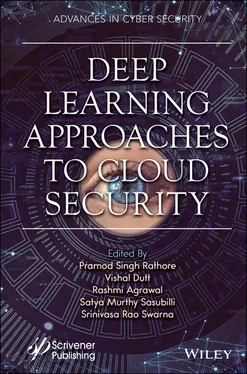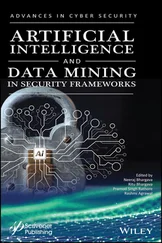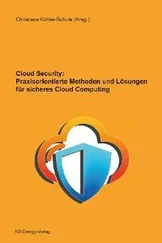In Chapter 9, we discuss Deep Learning standard confronter issues on which shallow models, like SVM, are highly affected by the menace of dimensionality. As a module of a two-phase learning plan counts numerous layers of non-straight management, a lot of noticeably robust highpoints are logically unglued from the evidence. The existing instructional workout awarding the ESANN Deep Learning unusual consultation delicacies the cutting-edge models and results in the present understanding of this learning method which is an orientation for some difficult classification activities. So, in this chapter, we will learn about how Cloud Computing and Deep Learning have taken over the world with their new and improved technologies and will learn about their applications, advantages, disadvantages, and correlations regarding different applications.
In Chapter 10, we show a progression of examination concentrates on the best way to quicken the preparation of a disseminated AI Deep Learning model dependent on remote administration. Circulated Deep Learning has become the standard method of present deep learning models preparation. In conventional appropriated deep learning dependent on mass simultaneous equal, the impermanent log jam of any hub in the group will defer the estimation of different hubs in view of the successive event of coordinated hindrances, bringing about, generally speaking, execution debasement. Our paper proposes a heap adjusting methodology named versatile quick reassignment (AdaptQR).
In Chapter 11, we discuss that Deep Learning and big data are the two very emerging technologies. The large amount of data gathered by organizations are used for many purposes like resolving problems in marketing, medical science, technology, national intelligence, etc. In this current world, the old house data processing units are not very efficient to handle, process, and analyze because the collected data is unstructured and very complex. Because of this, deep learning algorithms which are fast and efficient in solving the backlogs of the traditional algorithms are in use now a days. Biometrics uses the pattern recognition technology of Digital Image Processing for identifying unique features in humans. Most commonly applied or considered biometric modalities comprise fingerprint impression, facial landmarks, iris anatomy, speech recognition, hand writing detection, hand geometry recognition, finger vein detection, and signature identification.
In Chapter 12we discuss that security as an important issue in the cloud and a proper algorithm is needed; with the cloud, security is secure. This method is based on two algorithms: one based on machine learning and the other on a neural system. A machine learning algorithm is based on a KNN algorithm and neural system strategy based on data fragment and hashing technology; both of these processes should optimize cloud security by using cloud data encryption to the cloud server. There are seven applications used for in-depth study described, namely, customer relationship management, image recognition, natural language processing, recommendation programs, automated speech recognition, drug discovery, and toxicology and bioinformatics.
Chapter 13explains the classification and prediction of network assaults through an algorithm. The real time intrusion detection system finds the network attack using different deep learning algorithms to calculate the accuracy detection rate, false alarm rate, and generate higher accuracy and efficient prediction of network attacks.
In Chapter 14, we discuss that in today’s situation, mysterious structures are initiated to empower clients to store and procedurelize their information utilizing distributed computing. These structures are commonly developed utilizing cryptosystems, appropriated frameworks, and, some of the time, a mix of both. To be explicit, homomorphic cryptosystems, Attribute-Based Encryption (ABE), Service-Oriented Architecture (SOA), Secure Multi-Party Computation (SMC), and Secret Share Schemes (SSS) are the significant security systems being gotten to by practically all current usage. The principle issues being looked during the time spent on gigantic information investigation over cloud utilizing these methods are the computational expenses related with all handling errands, violations from other users of the cloud, insufficient security of internet channels, and absence of accessibility of resources.
Pramod Singh Rathore
Assistant Professor, Aryabhatta College of Engineering and Research Center, Ajmer Visiting Faculty, Department of Computer Science & Engineering MDSU Ajmer, India
Dr. Vishal Dutt
Assistant Professor, Aryabhatta College, Ajmer, India| Visiting Faculty, Department of Computer Science, MDSU Ajmer, India
vishaldutt53@gmail.com
Professor Rashmi Agrawal
Professor, Manavrachna International Institute of Research and Studies, Faridabad, India
Satya Murthy Sasubilli
Solution Architect, Huntington National Bank
Srinivasa Rao Swarna
Program Manager/Senior Data Architect, Tata Consultancy Services
1
Biometric Identification Using Deep Learning for Advance Cloud Security
Navani Siroya1* and Manju Mandot2
1 MDS University Ajmer, India
2 Computer Science, JRN Rajasthan Vidyapeeth University, Udaipur, India
* Corresponding author : siroyanavani@gmail.com
Abstract
A few decades ago, biometric identification was a staple technology of highly advanced security systems in movies, but today, it exists all around us. Biometric technologies have the potential to revolutionize approaches to identity verification worldwide.
This chapter discusses the prevailing Biometric modalities, their classification, and their working. It goes on to discuss the various approaches used for Facial Biometric Identification such as feature selection, extraction, face marking, and the Nearest Neighbor Approach.
Here, we propose a system that compares an input image with that of the database in order to detect the presence of any similarities. Moreover, we use fiducially point analysis to extract facial landmarks and compare them with the database using data mining and use the Nearest Neighbor Approach for identifying similar images.
The chapter ends with deliberations on the future extent of Biometric technologies and the need to put in ample safeguards for data protection and privacy.
Keywords:Biometric, feature extraction, facial recognition, nearest neighbor approach
Biometric authentication is a security process that relies on the unique biological characteristics of a person in order to affirm their identity. Biometric verification frameworks compare biometric data with existing original datasets that are stored. Examples of biometric characteristics include iris, palm print, retina, fingerprint, face, and voice signature. In recent years, deep learning-based models have helped accomplish best in class results in machine vision, audio recognition, and natural language processing tasks. These models appear to be a characteristic fit for dealing with the everexpanding size of biometric acknowledgment issues, from phone verification to air terminal security frameworks. Thus, application of machine learning techniques to biometric security arrangements has become a trend [1].
Classification of Biometric Data:
• Behavioral Biometrics: gestures, vocal recognition, handwritten texts, walking patterns, etc.
• Physical Biometrics: fingerprints, iris, vein, facial recognition, DNA, etc.
Data science consultants can use machine learning’s capacity to mine, look, and examine huge datasets for improving the execution of security frameworks and their reliability.
Читать дальше












